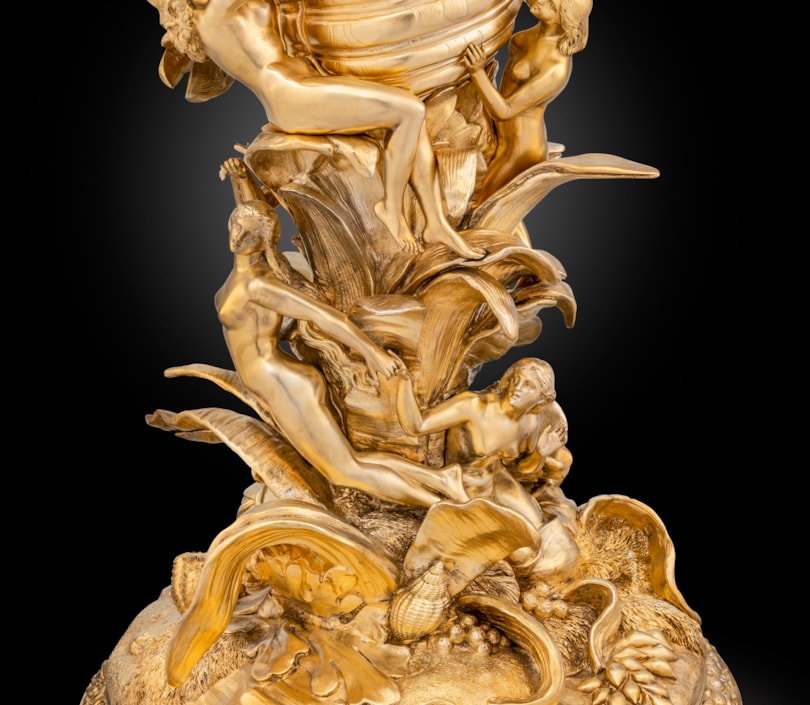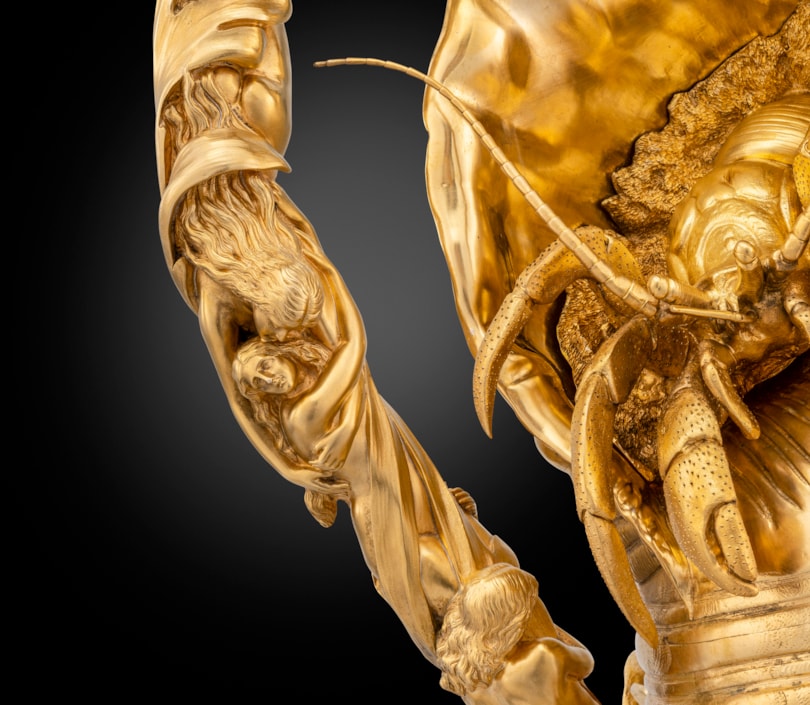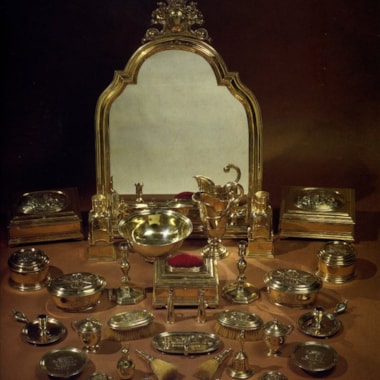Given how extraordinary this piece is in its nature, a complete unique commission that explores every aspect of craftmanship, design and execution of the goldsmith, it is most likely that piece formed part of Hancock’s display at the 1873 Vienna exhibition.
Likely candidates for the modelling and design who worked closely with the firm
Hancock & Co are:
Raffaelle Monti (1818-1881)
The son of the sculptor Gaetano Matteo Monti (1776-1847) of Ravenna and Milan, was something of a prodigy. In his late teens, when he was studying under his father and the sculptor Pompeo Marchesi (1790-1858), a former pupil of Canova, at the Academy of Fine Arts of Brera, Milan, he won several prizes including the Great Gold Medal for his group, 'Alexander Taming Bucephalus.' In 1838, having completed another colossal project, 'Ajax defending the body of Patroculus,' he was invited to go to Vienna to produce various busts for the Imperial family.
Monti's sudden appearance as a widely known celebrity sculptor in the United Kingdom coincided with the display of his work in London at the Great Exhibition of 1851. Before that he had been known in England to only a select group of wealthy patrons, for one of whom, William Cavendish, 6th Duke of Devonshire (1790-1858), he had created in 1847 his celebrated 'Veiled Vestal.
Henry Hugh Armstead RA (1828 – 1905)
Henry Hugh Armstead was born in London in 1828 and received his earliest education in the workshop of his father John, a heraldic chaser. He studied at the Government School of Design at Somerset House from the age of thirteen before attending two privately-run drawing schools.
Armstead was employed by the silversmiths Hunt and Roskell and Hancock &Co while at the same time working in the studio of sculptor Edward Hodges Baily and studying at the Royal Academy Schools. Until around 1863 he concentrated on metalwork, although the lack of recognition he received in this medium led him to turn to sculpture. After his sculptural work was noticed by the Gothic Revival architect George Gilbert Scott, Armstead was employed to create relief panels and other sculptural decorations for buildings including the Palace of Westminster, the Albert Memorial and the Colonial Office (now the Foreign and Commonwealth Office) on Whitehall. His sculpture anticipates the later New Sculpture movement which broadly rejected classicism in favour of realism.
Armstead, who also produced numerous book and magazine illustrations, was elected as a Royal Academician in 1879 (his Diploma Work was a marble relief, The Ever-Reigning Queen). He took an active role in the work of the academy, teaching in the schools for many years and placing the sculpture in many RA exhibitions. He died at his house in London, in 1905.
Both Armstead and Monti together with the architect Owen Jones also produced the ‘Tennyson Vase’ for the Paris 1867 Exhibition for Hancock’s which was purchased at the Exhibition by Napoleon III. The Goodwood Cup of 1866 and Armstead was again involved in the modelling of a Hancock presentation centrepiece commissioned by the Engineers of the Indian Service to the Royal Engineers in the same year as this magnificent ewer in the Vienna Exhibition 1873.
Probably David Orgell, Beverly Hills, late 1970s or early 1980s
Hancocks was founded by 1st January 1849 by Charles Frederick Hancock. He was previously a partner of Storr & Mortimer. He opened a shop on the corner of Bruton Street, new Bond Street, London, from where he advertised, in 1850, ‘As successor to Storr & Mortimer, Jeweller and Silversmith by special appointment to the Principal Sovereigns of Europe, (he) begs to return his most grateful thanks to the Nobility and Gentry for the kind patronage bestowed upon him and respectfully (informs) them he has recently established a manufactory adjoining his premises, affording him additional facilities in producing Works of Art and making every description of Plate, etc.’.
The firm exhibited at the Great Exhibition of 1851 with an impressive display of silver and subsequently appeared in Paris in 1867 and Vienna in 1873. Here Hancocks were awarded ‘solely’ the Emperors’ gold medal for Science and Art in addition to the ‘Prize Medal’. In 1856, Mr. Hancock was also granted the prestigious award of designing and producing the Victoria Cross which is still made exclusively by the company today.
The firm was restyled Hancock, Son & Company in 1866 on the semi retirement of Charles Frederick Hancock. His son, Mortimer, became partner with Henry Dore and Horatio Stewart. Three years later the company was renamed Hancocks & Company when his other son, Charles Frederick Junior, joined the partnership upon the complete retirement of his father.
You May Also Like












































































